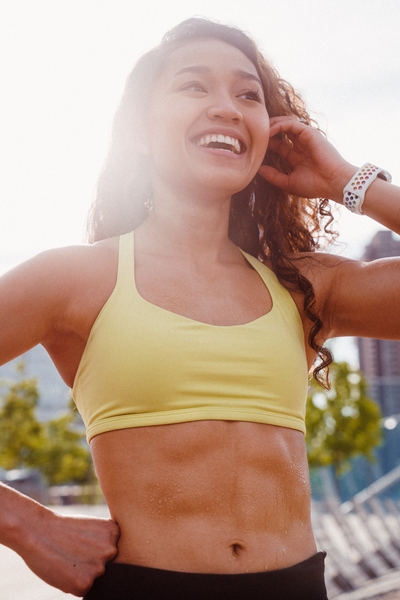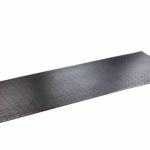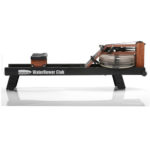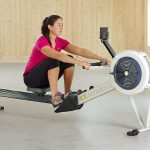Contents
Most people ask questions about rower core benefits. Specifically, asking if rowing machines are great for building a stronger core.
In this article, we’ll learn how core muscle exercises help strengthen the core by understanding how to train muscles, what you can gain, and how to prevent injuries.
Studies show that having a strong core improves performance in most activities, including sporting activities. So, what is the “core” all about, and how can roweing enthusiasts take advantage of it?
What are the core muscles?
The main major muscle groups included in the core are the transversus abdominis, internal and external obliques, pelvic floor muscles, multifidus, rectus abdominis, external obliques, and sacrospinalis (erector spinae) especially the diaphragm and the longissimus thoracis. Minor muscles included are the trapezius, gluteus maximus, and latissimus dorsi.
How can you work and strengthen your core on the rower?
It’s important to understand that rowing is not simply about the abdominals. The core is not just the front, it wraps around the entire body and helps strengthen the entire waist. The rowing motions repeated over and over strengthen the whole center section of the body. The push back engages the lower back and the end of each stroke works the abs just like a sit-up.
Part of the reason rowing is so effective at strengthening the core is that you are sitting on a somewhat unsteady seat, so your lower-back muscles and abs fire up to maintain stability throughout the rowing motion. Therefore, just the motion of gliding back and forth can help strengthen your lower back and abs (core)!
Core Exercises – Get the most core-toning power
 To maximize the core-strengthening power from the rowing movement, lean back slightly with your legs fully extended until your abs start to quiver. You can work the sides of the midsection by simply pretending that you are holding onto canoe paddles and target the obliques by pulling the handlebar to each side between regular strokes.
To maximize the core-strengthening power from the rowing movement, lean back slightly with your legs fully extended until your abs start to quiver. You can work the sides of the midsection by simply pretending that you are holding onto canoe paddles and target the obliques by pulling the handlebar to each side between regular strokes.
Although the rowing motion itself helps strengthen the core, adding core-specific training moves can help increase the core-toning effect even further.
How to properly engage your core
Some rowers may not get the stronger core they desire largely because they are not performing the stroke properly. To have proper form, your core must be engaged in every step. This means that your abs should either be engaged (tight), flexed, or stabilizing your body throughout the rowing stroke.
Here is a breakdown of core strength exercises on the rowing machine:
-
The catch
The abs should be engaged while flexing the torso forward.
-
The drive
While pulling the handlebar to the upper abdomen and driving with the legs, the upper body should be fully engaged. This helps tighten the abdomen in order to maintain an upright posture while gradually strengthening the core.
-
The finish
Your back should lean back slightly as you finish and your abdomen should slow down the momentum while stabilizing the body. The body should also slow down the swinging backward as you finish.
-
The recovery
As the body recovers back to the starting position (the Catch), the abdomen will flex your body forward and gradually become engaged at the catch position.
Proper Rowing Machine Form
You now know that engaging the core helps you achieve two rowing goals at once; working out your abdomen and core while helping you perform a proper rowing stroke.
-
Avoid rowing with just your arms

You can fix this problem by reminding yourself that 20% of rowing should come from pulling with the arms, 20% from bracing the core, and 60% from pushing with the legs.
-
Maintain a straight posture throughout the stroke
Avoid rounding or hunching your back over but keep it straight and erect instead. You can fix a hunched or rounded back by having your core engaged and focusing on sitting upright.
-
Avoid rushing your row
The recovery should take twice as long as the drive. Therefore, if the seat slams into the front end of the rail, you’re rushing your row and your body keeps jerking uncontrollably. Remember, the drive should be half as long as the recovery (maintain a ratio of 1:2).
-
Keep your feet and hands connected
Keeping your feet and hands connected prevents the rear part of the body from shooting ahead of the body and helps you maintain balance throughout the row.
Even for people who have never rowed, it’s pretty clear from rowing motions (pushing off with the legs before pulling the handlebar towards your chest) that rowing is an incredible exercise for your lower as well as upper body.
Therefore, it doesn’t come as a surprise that rowing machines have gained immense popularity, especially in recent years.
Even better, rowing has proven to be an intense and effective workout for the core without even having to concentrate on engaging it on the rower. The core is automatically engaged.




Pingback:Snode Water Rowing Machine | Rowing Machine Pros
Pingback:Does a Rowing Machine Benefit Abs? | Rowing Machine Pros